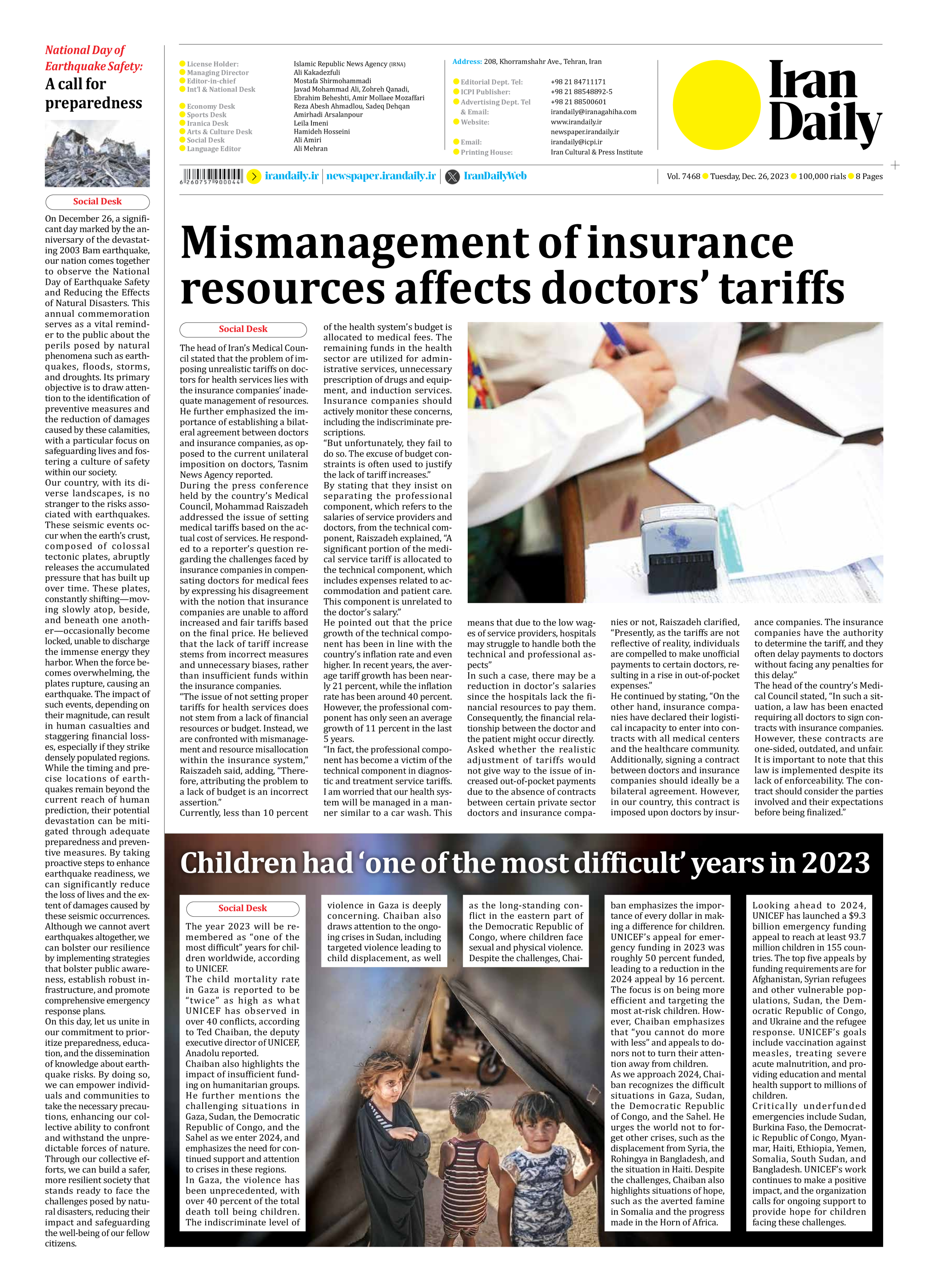
National Day of Earthquake Safety:
A call for preparedness
Social Desk
On December 26, a significant day marked by the anniversary of the devastating 2003 Bam earthquake, our nation comes together to observe the National Day of Earthquake Safety and Reducing the Effects of Natural Disasters. This annual commemoration serves as a vital reminder to the public about the perils posed by natural phenomena such as earthquakes, floods, storms, and droughts. Its primary objective is to draw attention to the identification of preventive measures and the reduction of damages caused by these calamities, with a particular focus on safeguarding lives and fostering a culture of safety within our society.
Our country, with its diverse landscapes, is no stranger to the risks associated with earthquakes. These seismic events occur when the earth’s crust, composed of colossal tectonic plates, abruptly releases the accumulated pressure that has built up over time. These plates, constantly shifting—moving slowly atop, beside, and beneath one another—occasionally become locked, unable to discharge the immense energy they harbor. When the force becomes overwhelming, the plates rupture, causing an earthquake. The impact of such events, depending on their magnitude, can result in human casualties and staggering financial losses, especially if they strike densely populated regions.
While the timing and precise locations of earthquakes remain beyond the current reach of human prediction, their potential devastation can be mitigated through adequate preparedness and preventive measures. By taking proactive steps to enhance earthquake readiness, we can significantly reduce the loss of lives and the extent of damages caused by these seismic occurrences. Although we cannot avert earthquakes altogether, we can bolster our resilience by implementing strategies that bolster public awareness, establish robust infrastructure, and promote comprehensive emergency response plans.
On this day, let us unite in our commitment to prioritize preparedness, education, and the dissemination of knowledge about earthquake risks. By doing so, we can empower individuals and communities to take the necessary precautions, enhancing our collective ability to confront and withstand the unpredictable forces of nature. Through our collective efforts, we can build a safer, more resilient society that stands ready to face the challenges posed by natural disasters, reducing their impact and safeguarding the well-being of our fellow citizens.







